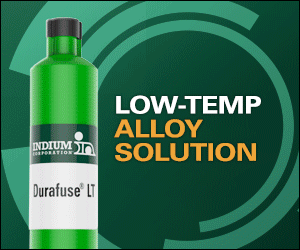3D Printing the (Near) Impossible With Soluble Supports, Says IDTechEx Research Report
BOSTON — Since its inception in the late 1980s, 3D printing, or additive manufacturing, has been the subject of intense media attention due to the design and manufacture freedom afforded to the end user. Indeed, this freedom has become so intertwined with the concept of 3D printing that manufacturers will promote their products with the tagline that “complexity is free”. However, when using a 3D printer for the first time, the user quickly realises that, as with any other form of manufacturing, there are tooling constraints. Within the field of Fused Filament Fabrication, overhangs of greater than 45° must be supported with material underneath to prevent the hot thermoplastic from deforming in air. The employment of supports, though integral to the building process, then produces an extra, laborious step into the manufacturing process: post-processing. Supports are therefore a necessary evil: essential to obtaining a useful component, but a bit of a waste of time and material otherwise.
Materials formulators operating in the 3D printing supply chain have taken note and have taken aim at this necessary evil in order to streamline the end user’s experience. As such, soluble supports were born. The premise of soluble supports is simple: using a FFF printer with a dual nozzle to extrude this additional material, the build material (PLA or ABS for example) is deposited as usual, but the supports comprise a material that is easily washed away by submerging the finished product in water or an organic solvent. As a result, the time lost to manually grinding and smoothing the surface of the final part is recuperated. Not only is the entire printing process streamlined, but the printing of interlocking or moving parts, or internal voids is now possible, so long as the solution of solvent and support material can drain from the component.
As of 2018, there are two key materials that are used as soluble supports, however this list is growing rapidly as material formulators realise the size of the potential opportunity presented by this new class of 3D printing material. The first is PVA, the same polymer used by children the world over to glue their creations together. PVA is non-toxic, water soluble and extrudes at the same temperature as PLA. The second, HIPS, is only soluble in (R)-+-limonene, but is more compatible with ABS or PETG. Subsequent product launches from Stratasys, Airwolf 3D and Dow, among others, only serve to increase consumer choice in selecting the most appropriate material which will be compatible with their build material. Each of these materials have their own usage constraints, such as exposure to moisture in the atmosphere, or extrusion temperatures, but all are unrivalled in terms of the geometric freedom afforded to end users that was previously unobtainable.
Learn more about 3D Printing materials in the IDTechEx Research report 3D Printing Materials 2018-2028: Technology and Market Analysis.










